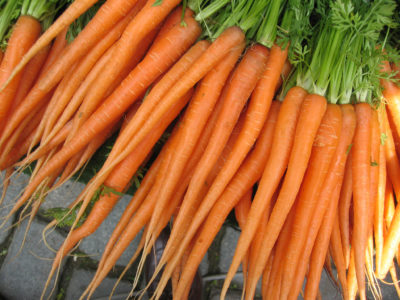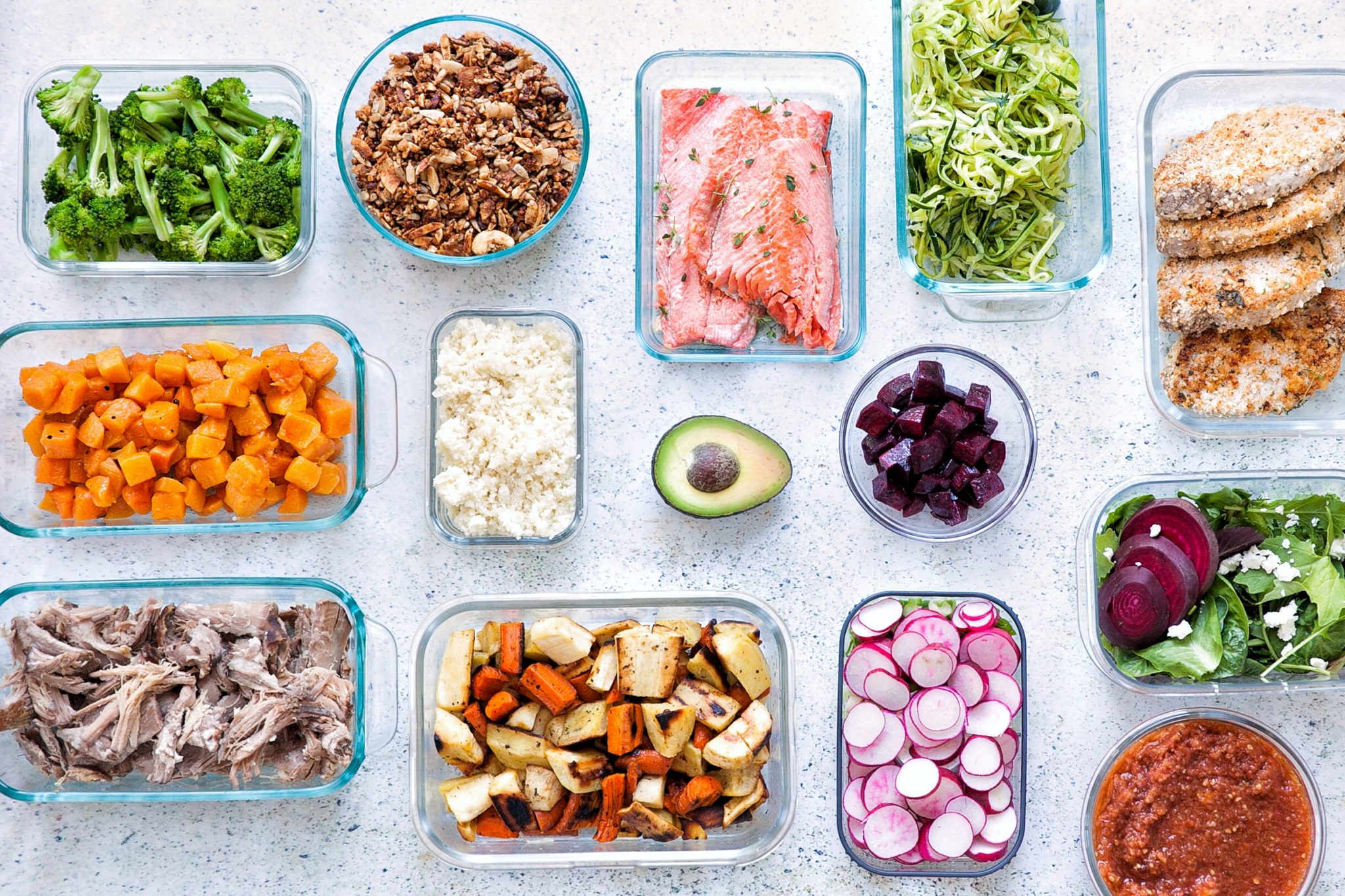Find your local farmers market!
The carrot is a root vegetable belonging to the same plant family as celery, dill, and coriander (cilantro). We think of this vegetable as being bright orange, but other varieties are purple, red, white, or yellow (and yes, that means a difference in phytonutrients!). Wild carrots are native to Europe and southwestern Asia, and it is believed that this plant originated in Persia (interestingly, it was cultivated for its leaves and seeds, not the roots that we generally eat now). It’s true: the entire carrot can be consumed, including the oft-discarded greens! I love to braise them, as per my Kitchen Tip: How to Braise Greens. It’s no secret that carrots are an awesomely versatile root vegetable that are great eaten solo or to add some mild sweetness to savory dishes (especially roasts); some of my favorite recipes including carrots are my Thai Green Curry, Carrot Cake Bites, and Curry Cream of Carrot Soup.
Carrots are known for being a nutritious vegetable, and that notion isn’t wrong! 100g of carrot provides more than 100% of your RDV of vitamin A precursors. Carrots also contain small or trace amounts of almost every other dietary vitamin and mineral. These brightly-colored roots are also rich in phytonutrients, which varies according to the cultivar type.
Carrots are a cold weather vegetable (oftentimes called “storage vegetables”), so they might be found starting in the late summer or early fall at a farmers’ market. Otherwise, carrots are available at grocery stores year-round!


 Radish
Radish
